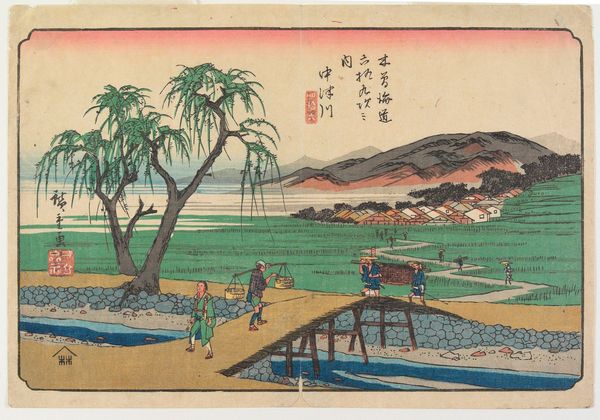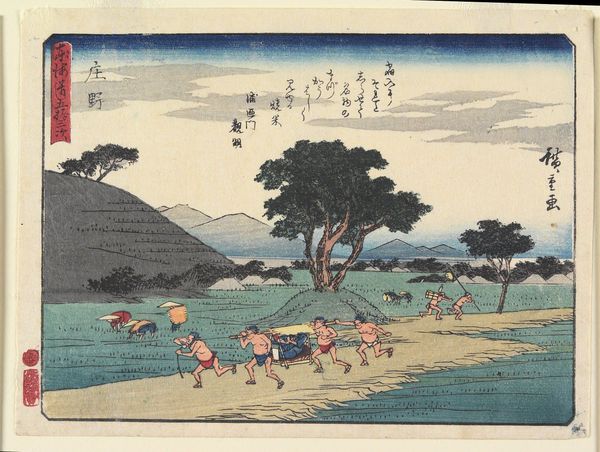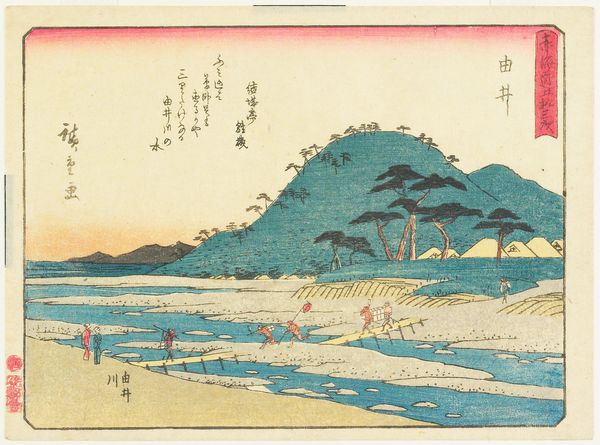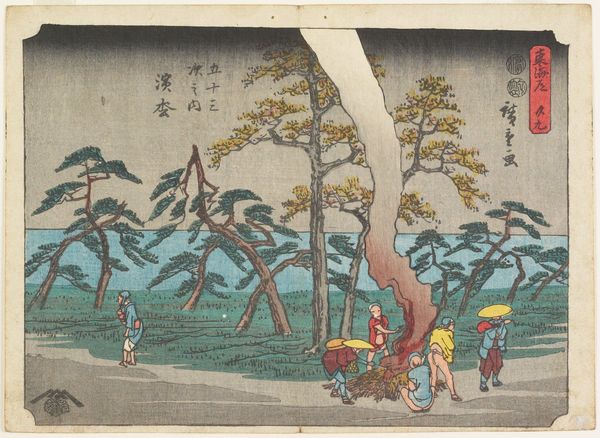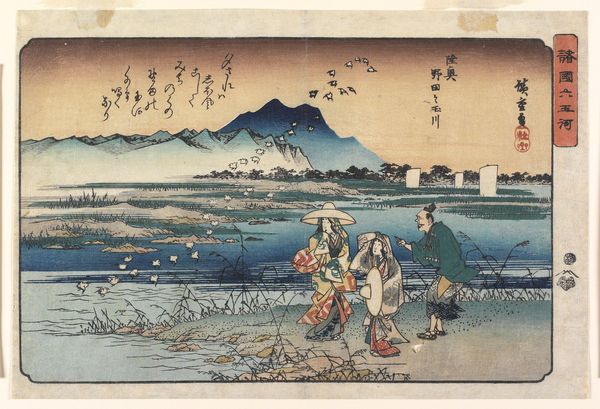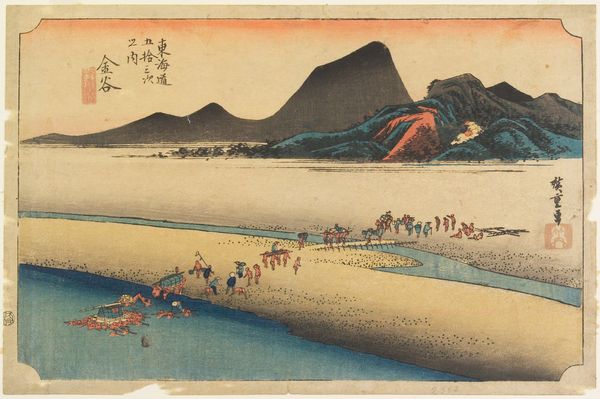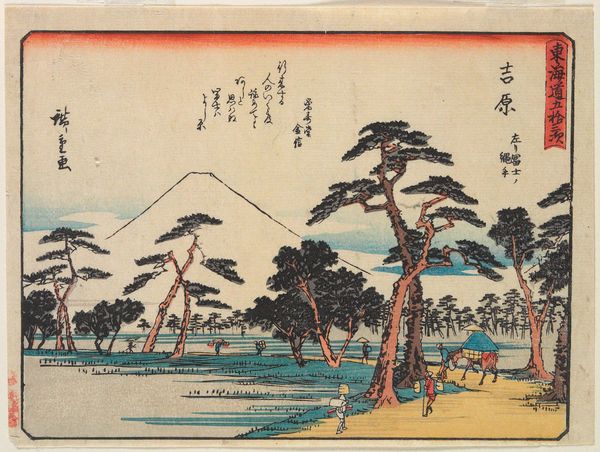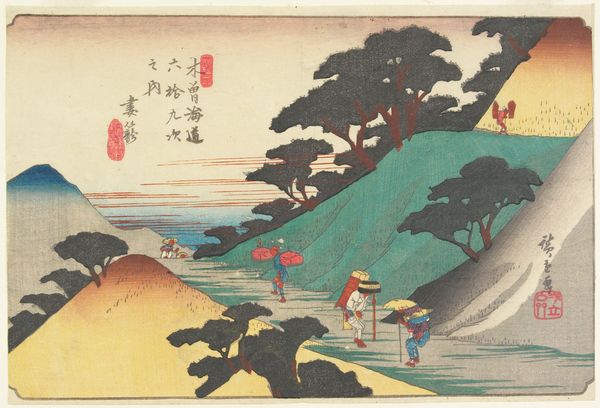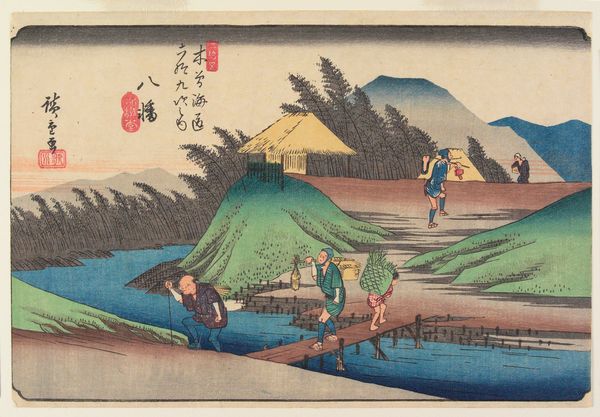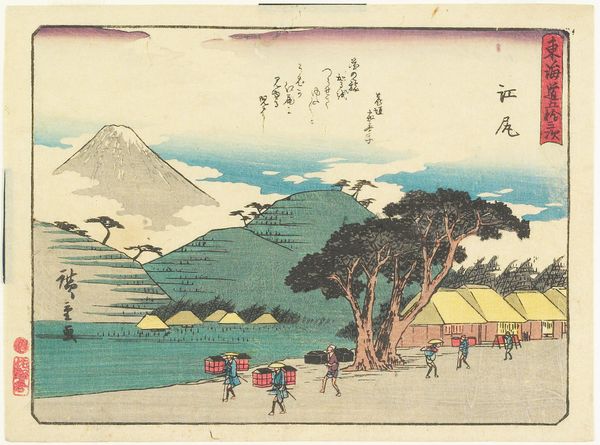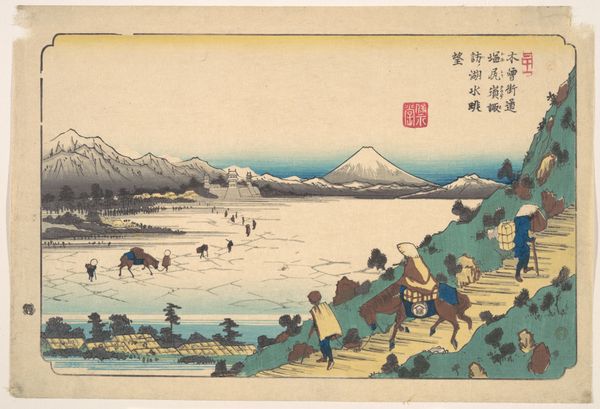
coloured-pencil, print, ink, woodblock-print
#
coloured-pencil
# print
#
asian-art
#
landscape
#
ukiyo-e
#
figuration
#
ink
#
coloured pencil
#
woodblock-print
#
sketchbook drawing
Dimensions: 8 7/8 × 13 7/8 in. (22.6 × 35.3 cm) (image, horizontal ōban)
Copyright: Public Domain
Curator: As we observe Utagawa Hiroshige's woodblock print, dating from approximately 1835 to 1838, titled "No. 22," what immediately captures your attention? Editor: The overall tone is very calm. The hazy pink sky and soft blue water create a peaceful mood, though I sense a contrast with the more textured grasses filling the foreground. It's like observing serenity through a screen of life. Curator: I'm interested that you pinpoint that specific detail, the textures. Ukiyo-e prints, such as this, developed alongside a flourishing urban culture in Japan. It speaks to the interests and pleasures of this class. Hiroshige often depicted not just famous landmarks, but everyday scenes, creating an accessible, and consumable view of life for a broad population. Editor: The composition is striking as well. Notice the meandering river which acts almost as a structural backbone, dividing the middle ground. The careful gradation in the water, the subtle coloring, is extremely alluring, and very calculated. Curator: Absolutely. That division emphasizes the dichotomy between nature and human activity, further exploring society's perception of these traveling figures in a landscape setting. The figures, laden with bundles, suggest travel or trade, integrating human enterprise with nature's rhythm. We also have the distant silhouette of what could be Mt. Fuji. Editor: Yes! These are very intriguing layers in the design and concept. This almost pushes the design of a colored pencil drawing! Also consider, how well is the horizon defined? A true test of skill! Curator: Agreed. And by experiencing "No. 22" today, we can analyze not just aesthetic strategies but the museum as a location for a socio-cultural meeting place. This experience allows us to reflect on how our interaction with art can reflect broader cultural norms and values. Editor: A fascinating reflection, considering what at first appears so calm.
Comments
No comments
Be the first to comment and join the conversation on the ultimate creative platform.
